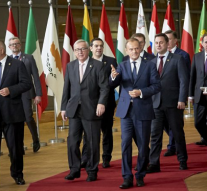
A New Economic Outset for 2019
Economy 19 December 2018The very last EU Council Summit for 2018 took place on December 13-14. The agenda outlined several topics to be discussed upon. Notwithstanding the structural political crises that have been shaking the Union over the last years, the agenda does not reveal surprising topics. Multiannual financial framework, single market, migrations, and external relations will be major issues around which the EU leaders shall gather. Besides, the regular Euro Summit is about to be held as well. What are the newest topics which will be shape the economic outlook for the 2019? Why aren’t there any major issues related to economic and financial affairs?
The European Council welcomed the intensive preparatory work carried out during this semester on the future Multiannual Financial Framework and took note of the Presidency’s progress report. It called on the incoming Presidency to continue that work and develop an orientation for the next stage of the negotiations, with a view to achieving an agreement in the European Council in autumn 2019. Commission sets out EU’s economic and social priorities for 2019, presents Opinions on Draft Budgetary Plans and confirms the existence of particularly serious non-compliance with the Stability and Growth Pact in the case of Italy; Greece is integrated into the European Semester for the first time. The 2019 European Semester cycle of economic and social policy coordination begins against a backdrop of sustained but less dynamic growth in a climate of high uncertainty. A lot has been achieved since 2014 but more must be done to support inclusive and sustainable growth and job creation while enhancing the resilience of Member States’ economies. At EU level, this demands taking the decisions required to further strengthen the Economic and Monetary Union. At national level, there is a pressing need to use the current growth momentum to build up fiscal buffers and reduce debt. Investment and structural reforms need to focus even more on boosting productivity and growth potential. These actions will provide the conditions for sustained macro-financial stability and serve EU’s long-term competitiveness. This will, in turn, create the conditions for more and better jobs, greater social fairness and better living standards for Europeans.
The Annual Growth Survey (AGS), which sets the general economic and social priorities for the upcoming year, called upon the EU and its Member States to take decisive and concerted policy action to deliver inclusive and sustainable growth. At national level, policy efforts should focus on delivering high-quality investment, and reforms that increase productivity growth, inclusiveness and institutional capacity, while continuing to ensure macro-financial stability and sound public finances. At EU level, the priorities are deepening the Single Market, completing the architecture of the Economic and Monetary Union (EMU) and advancing the principles set out in the European Pillar of Social Rights.
The draft Joint Employment Report, which analyses the employment and social situation in Europe, shows continued job creation, decreasing unemployment and an improving social situation across the EU. The Report also includes the findings of the Social Scoreboard, which analyses the performances of the Member States in light of the principles of the European Pillar of Social Rights. In the second quarter of 2018, 239 million people were in employment in the EU, the highest number that has ever been recorded. Around 12 million jobs have been created since the start of the Juncker Commission. The share of people at risk of poverty or social exclusion decreased markedly in 2017, with more than five million people exiting from poverty or social exclusion compared to the previous year. The total number of people at risk of poverty or social exclusion has fallen below pre-crisis levels. However, the economic recovery is yet to reach all groups of society. The employment rate of older workers increased substantially over the last decade, but for the young, low-skilled and people with a migrant background, employability remains difficult in a number of Member States. The participation of women in the labour market continues to grow at a fast pace, but this has not yet been translated into a significant decrease in the gender pay gap and pension gap.



